Brian Brenner, P.E., F.ASCE, is a professor of the practice at Tufts University and a principal engineer with Tighe & Bond in Westwood, Massachusetts. His collections of essays, Don’t Throw This Away!, Bridginess, and Too Much Information, published by ASCE Press, are available in the ASCE Library.
In his Civil Engineering Source series More Water Under the Bridge, Brenner shares some thoughts each month about life as a civil engineer, considering bridge engineering from a unique, often comical point of view.
Here are the top five bridges.
I did not use a scientific survey method to prepare the list. To identify the top five bridges, I conducted a detailed survey of myself, and these are the survey results. To narrow the scope further, only U.S. bridges appear on the list. Many more outside the U.S. could be considered, but that is the subject of a future discussion.
On with the countdown:
Number 5: Yaquina Bay Bridge, Newport, Oregon
The Oregon coast has a series of spectacular bridges constructed in the 1930s. Many designs were led by Conde McCullough, chief bridge engineer of the Oregon Highway Department from 1919 to 1935. His first assignments included design work on US Highway 101, the main coastal road along the Pacific Ocean. The bridges provided continuity across coastal bays and rivers for a continuous coastal highway. The designs are beautiful and have distinctive features like gothic spires and latticework.
McCullough’s work includes a large cantilever truss bridge crossing Coos Bay. Most bridges of this type are utilitarian and industrial-looking. McCullough’s version, posthumously named the Conde B. McCullough Memorial Bridge, features curving bottom chords instead of the usual flat lines. The bridge also has decorative portal spires and angles on the towers. The approaches to the main span feature a series of concrete deck arches.
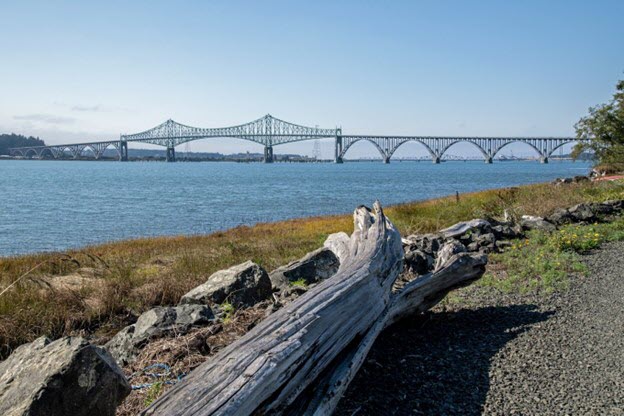
McCullough’s arch design was further developed for the Yaquina Bay Bridge in Newport, Oregon. The bridge was completed in 1936 at about the same time as the bridge crossing Coos Bay Bridge. Some design elements appeared to have been used for both bridges. For the spectacular Newport bridge, the deck arches increase in size until the main span, where the largest arch seems to jump out of the water and above the deck.
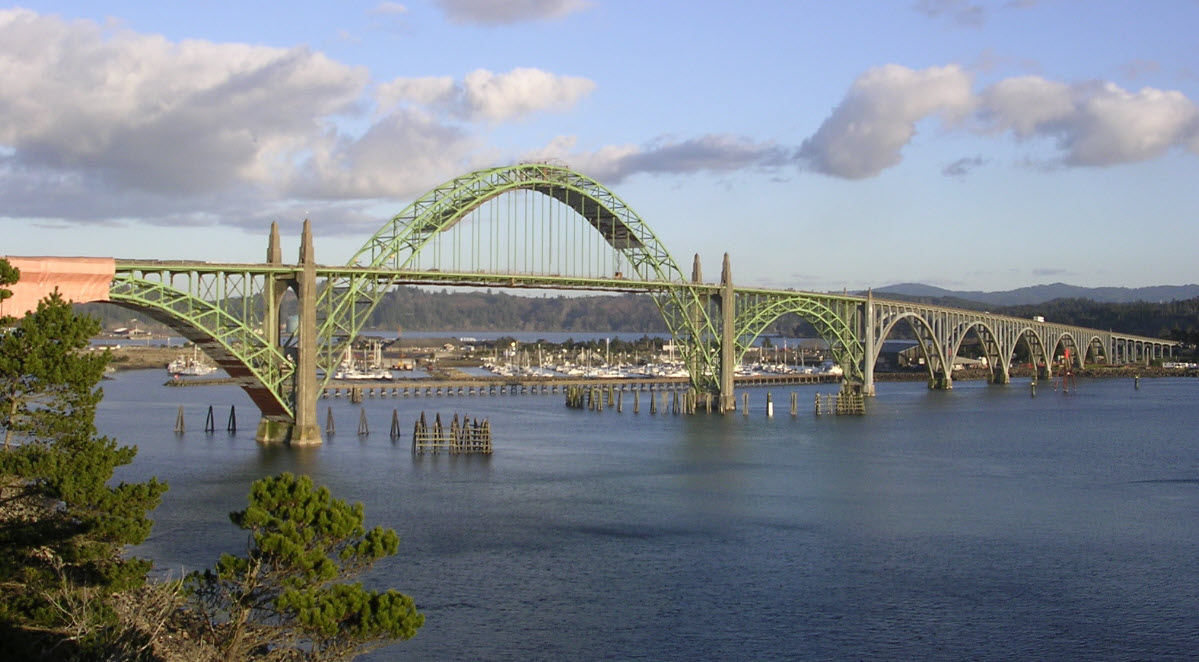 Cacophony
Cacophony
 Cacophony
Cacophony Number 4: Beaver Bridge, Beaver, Arkansas
If you are looking for a miniature suspension bridge with all the trappings, Beaver, Arkansas, is the place to visit. The bridge there has a big-city form that comfortably fits in its small town and wooded Ozark hills surroundings.
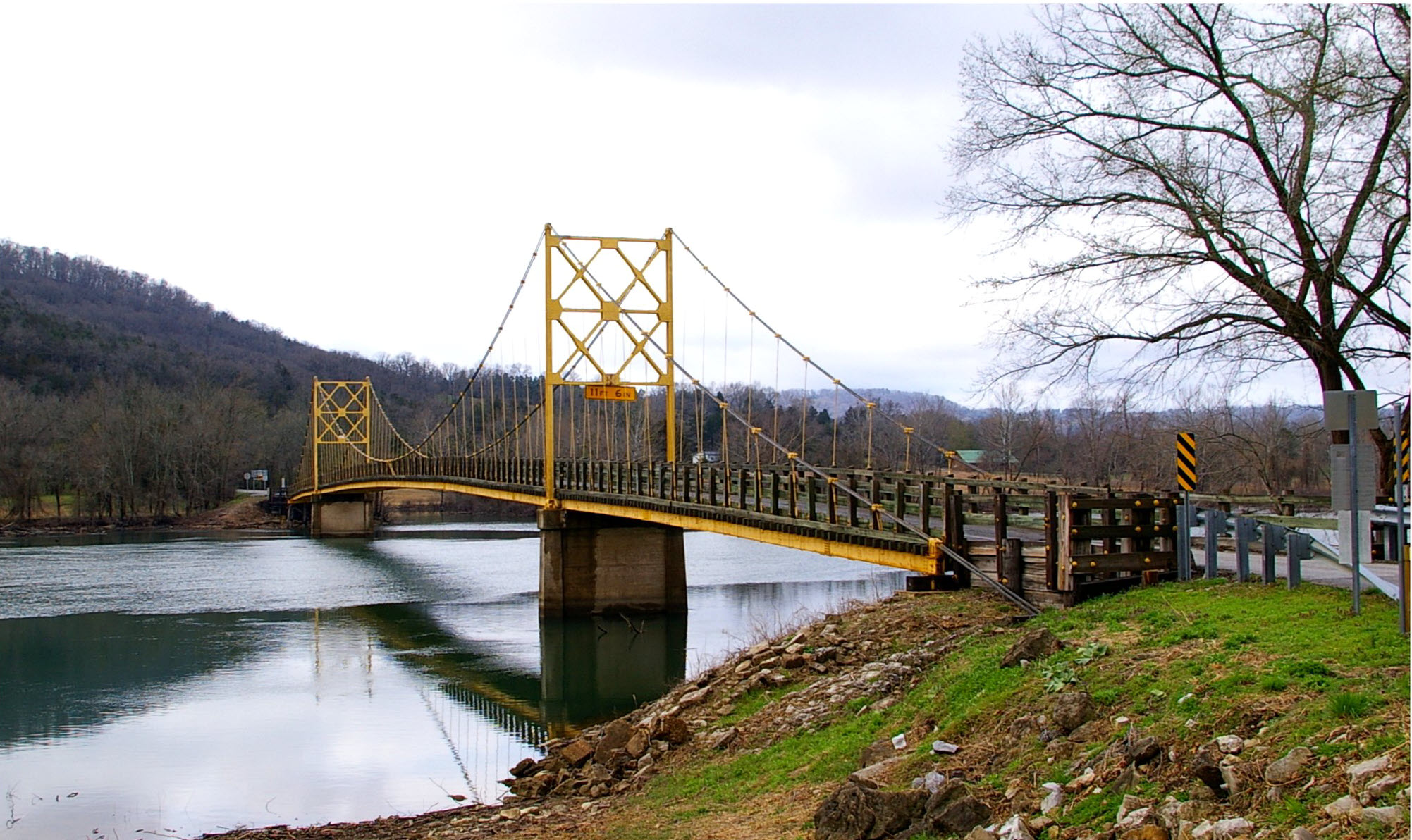
The bridge crosses the White River and opened to traffic in 1949. It is known locally as the “Little Golden Gate Bridge.” It provides one lane of alternating traffic on a wood deck.
It is just your friendly neighborhood suspension bridge:
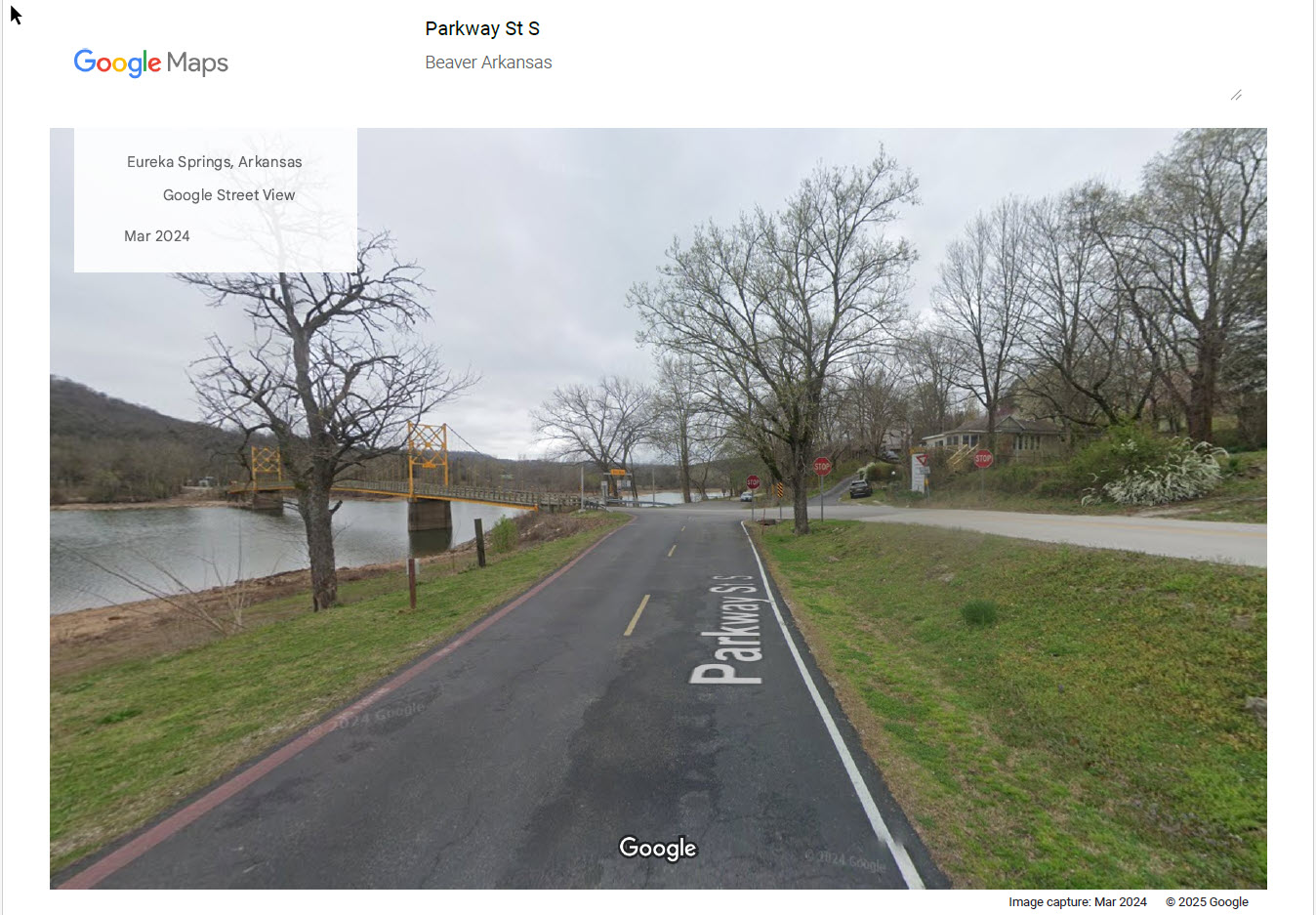
Number 3: Galena Creek Bridge, near Reno, Nevada
This concrete arch frame bridge carries I-580 over Galena Creek, a mostly dry waterway. The shape of the bridge is so distinct, and the location so starkly beautiful, that the bridge seems almost like a mirage and not an actual bridge. Construction was completed in 2012.
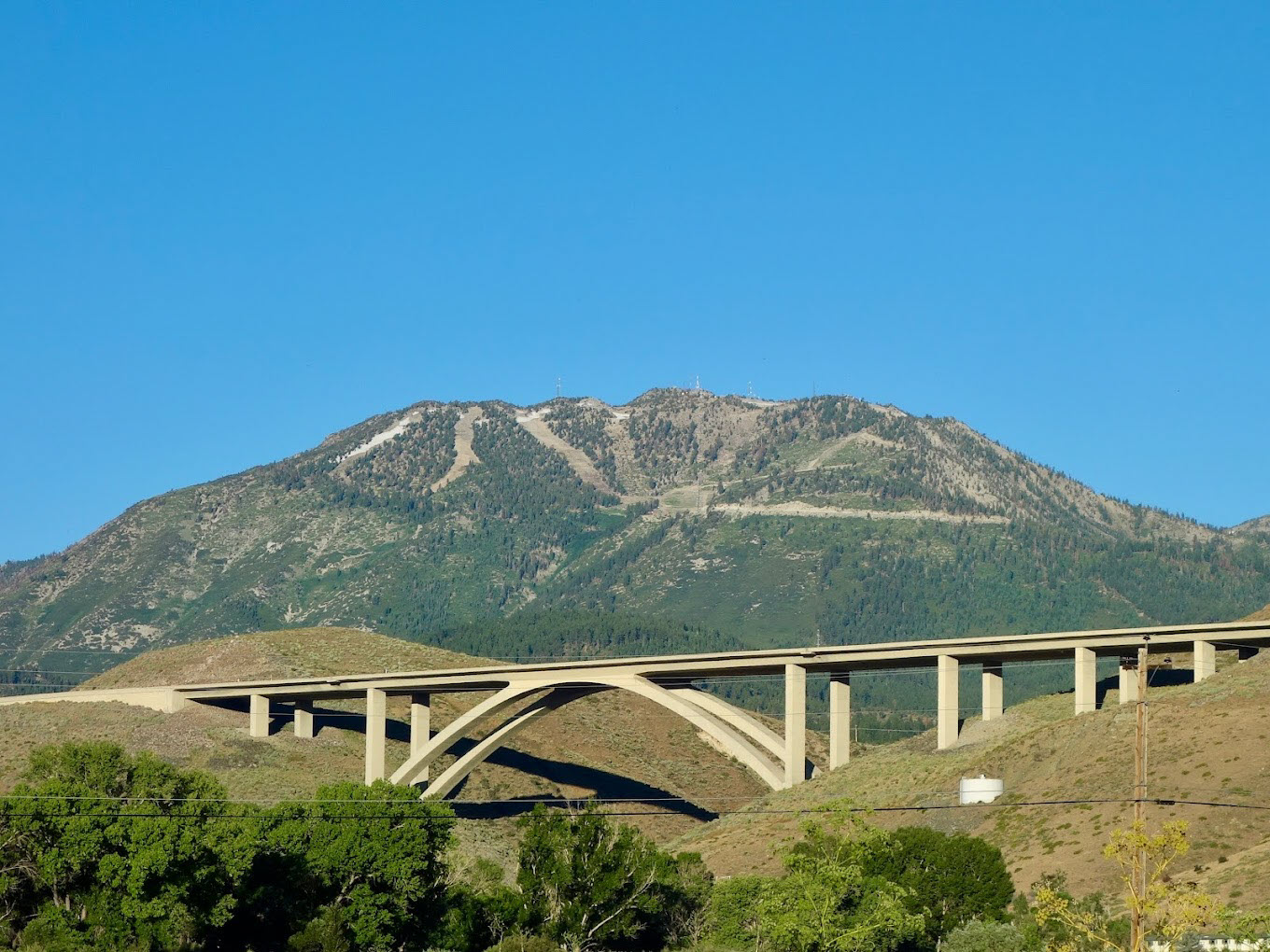 Doug Morrell
Doug Morrell Number 2: New River Gorge Bridge, Victor, West Virginia
The New River flows through a long, wooded canyon in southern West Virginia. In 2020, the New River Gorge was upgraded from a national river to a national park. It seems like a national park dedicated to a bridge because the giant arch spans the chasm and dominates many views.
The bridge carries U.S. Route 19 across the gorge. The road was rerouted from a low-level bridge. When the bridge opened in 1977, it was the world’s longest-spanning arch bridge, replacing the Bayonne Bridge. It has since dropped down to number 7 on the arch bridge list.
The deck arch is a perfect fit for its surroundings. It has a slender, all-steel framing, and the designers specified weathering steel.
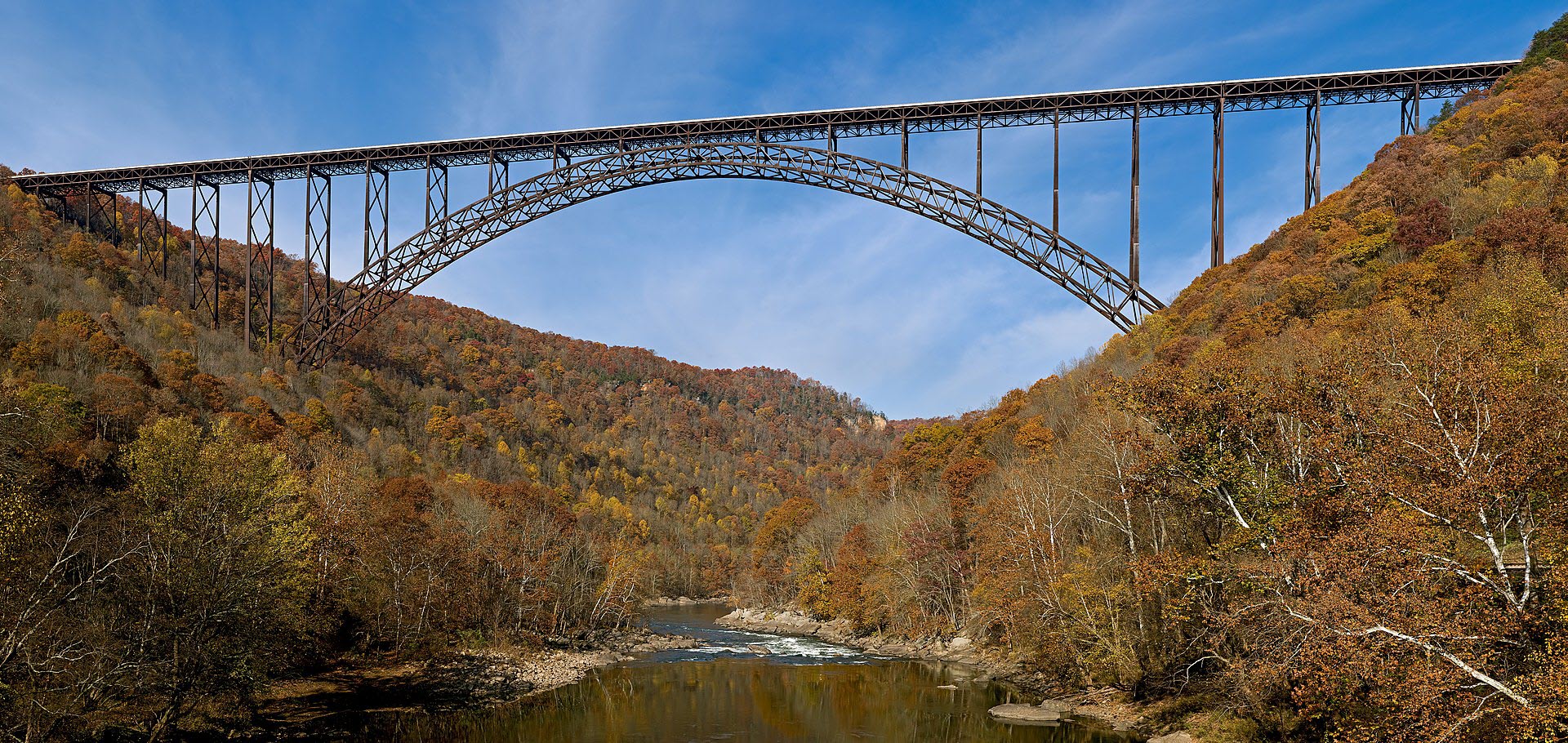 JaGa
JaGa On the third Saturday in October, the New River Gorge Bridge Day Commission helps to organize Bridge Day. It is thought to be the largest single-day festival in West Virginia. On Bridge Day, visitors are invited to run across the bridge in a road race, rappel down to the river, or jump off the side and parachute down. It is a festival where the expression “Go jump off a bridge” takes on a literal meaning.
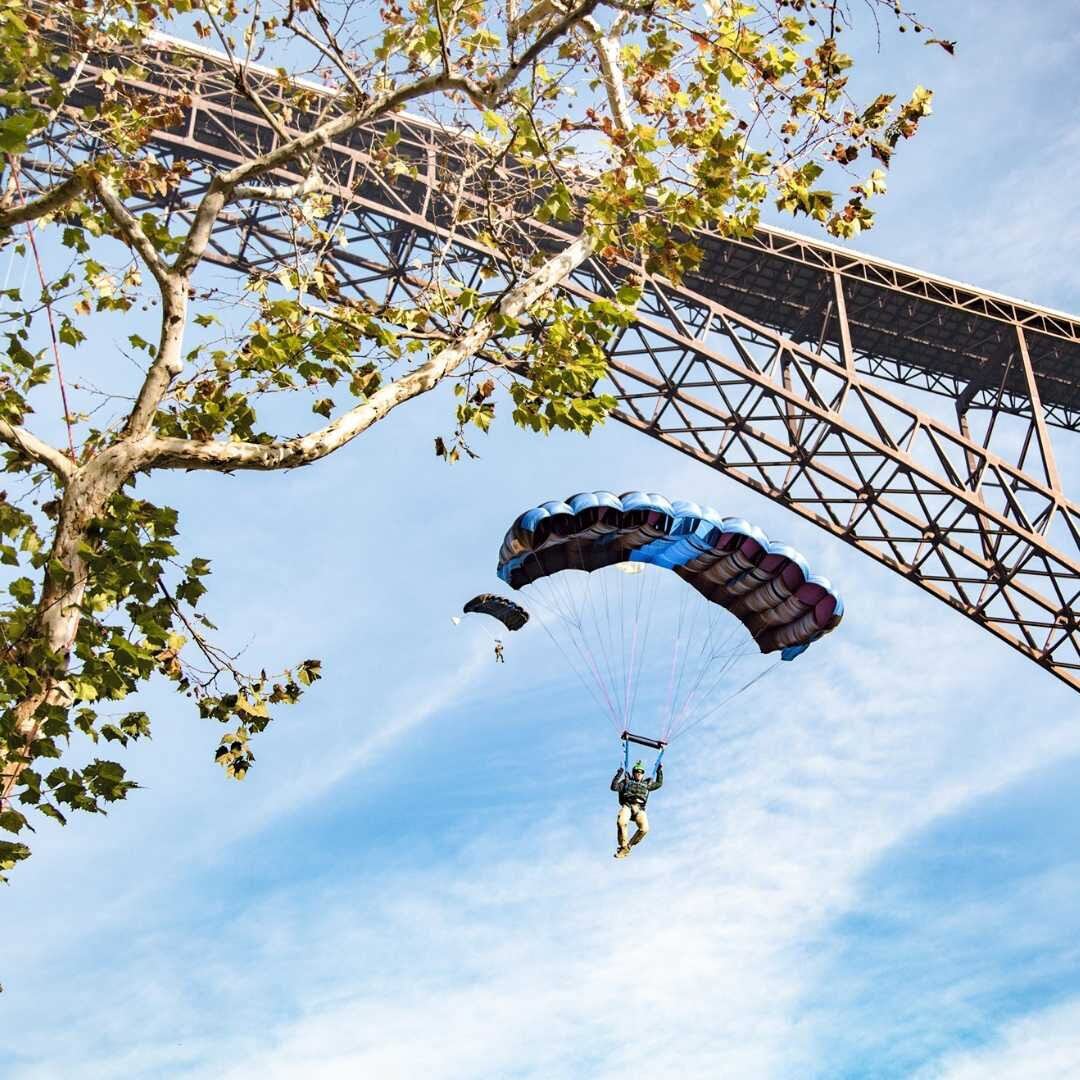
Number 1: Bear Mountain Bridge, Cortland, New York
The Bear Mountain Bridge is another bridge that fits well at its site. The bridge opened for service in 1924. For 19 months, it held the honor as the world’s longest span. The crossing is where the Hudson River narrows between Bear Mountain and hills on the river's east bank. Further south, the river widens into Tappan Zee, where the New York Thruway crosses over the 3-mile-long, newly built Mario Cuomo Bridge.
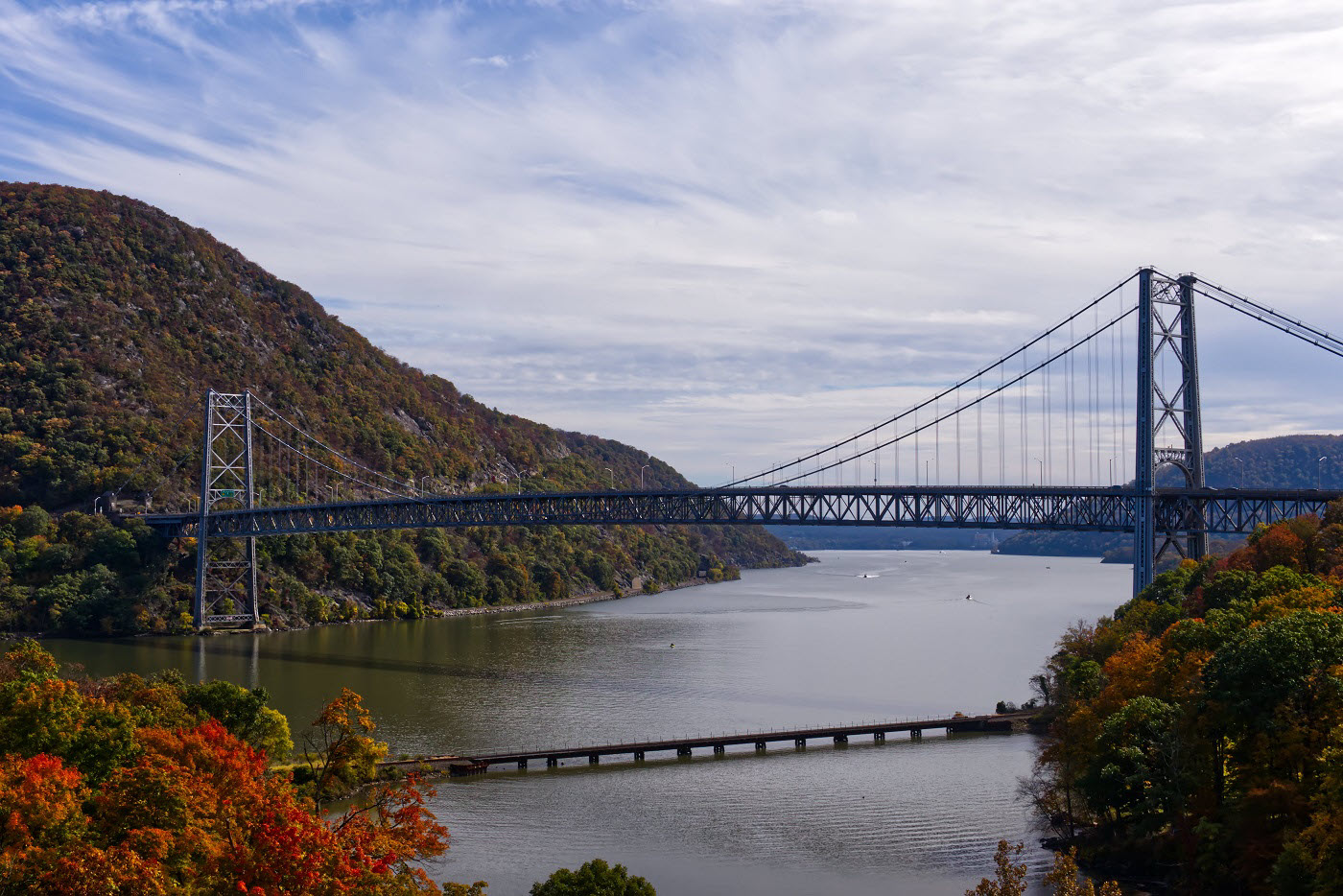 Zachary Coleman
Zachary Coleman
The Bear Mountain Bridge featured several pioneering construction innovations in its day that influenced large suspension bridges like the George Washington Bridge and Golden Gate Bridge, designed and built a few years later. Cable anchorages on the east side were embedded in anchorages constructed in the hillside rock. The bridge construction featured innovations in wrapping and assembling individual strands of cables.
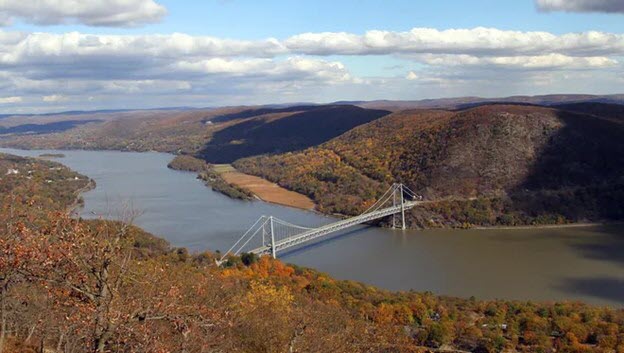 Frank Becerra Jr.
Frank Becerra Jr.



